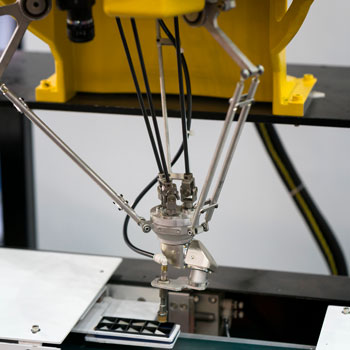The digital transformation wave has started to impact the healthcare industry too. Patients aren’t as captive of an audience as they once were. They expect connectivity and transparency in their healthcare experience because of their experience in other industries.
Patients expect their health records readily “available, discoverable, and understandable.” This means:
- Healthcare records have to become increasingly digitized, i.e., available all the time
- As patients move through the healthcare ecosystem, their electronic health records must be readily discoverable
- To support automated clinical decisions and other machine-based processing, the data must be structured and standardized i.e., understandable
This has huge implications for the healthcare industry. The macro-ones being:
| Current | Future model |
|---|---|
| From institution driven healthcare | To patient driven healthcare |
| From silos of data between payers, providers, CMS etc | To standardized & secure data available to all stakeholders |
| From batch processing of data | To real-time access to quality data |
Considering privacy and security concerns, a not-for-profit, ANSI-accredited standards developing organization, Health Level Seven International (HL7), provides a comprehensive framework and associated standards for exchanging, integrating, sharing, and retrieval of electronic health information needs for clinical practice as well as the management, delivery, and evaluation of health services. One such standard defined is HL7® FHIR® (Fast Healthcare Interoperability Resources) for interoperability. The key principles on which FHIR is based on are:
- FHIR can be used as a standalone standard for data exchange but can and should also be used in association with other widely used standards
- FHIR aims to simplify implementation without sacrificing the integrity of the information
FHIR leverages prevailing logical and theoretical models to offer a consistent, easy to implement, and rigorous mechanism for data exchange between healthcare applications.
Interoperability & FHIR
Interoperability, the foundation of FHIR compliance, has been a challenge in the healthcare ecosystem. While Providers & Payers are key generators of patient health data, there are many other sources of health data that need to be integrated to achieve true interoperability.
FHIR (Fast Healthcare Interoperability Resources) is an interoperability standard intended to facilitate the exchange of healthcare information among healthcare providers, patients, caregivers, payers, researchers, and anyone else involved in the healthcare ecosystem.
- FHIR specification is a standard for the electronic exchange of healthcare information
- FHIR creates a standard data set that allows different applications and systems to send, receive, and share data rapidly. This standardized data set would apply to both providers and payers, allowing for two-way exchanges of data with Medicare, Medicaid, and Commercial payers
- The goal is to create a base set of resources that satisfy the most common use cases
| Current Interoperability Principles | FHIR Interoperability Principles |
|---|---|
| Architecture Paradigm is message, Fields and record oriented | Architecture Paradigm is RESTful oriented |
| International message format support is localized | International message format support is single global standard |
| Inherently not suitable for mobile devices | Inherently suitable for mobile devices |
| International character support – ASCII | International character support – UTF8 |
The benefits of this interoperable data are multi-fold and cut across stakeholders.
For providers, by giving and receiving access to the right data at the right time, provider organizations would be able to:
- Provide better coordinated and timely care to their patients
- Enable increased patient safety by eliminating medical errors
- Reduce unnecessary/duplicate diagnostic tests
- Achieve greater patient engagement and satisfaction
- Reduce medical liability
- Attain regulatory compliance with ease
For Payers, data feeds via HL7 or FHIR can be turned into a host of robust sales tools, including dashboards that display solution snapshots and potential savings, provider and network mapping, live product cost comparisons, and the ROI of value-based and member engagement programs.
For consumers, making health data accessible makes them take more control of their healthcare decisions, from diet and exercise to treatment and medicine. Consumers are inspired to use new technologies to aggregate health data for future records. In addition, it eliminates duplicate tests and services, thus reducing costs.
For Researches, FHIR data gives them access to a large pool of health care data for clinical research, epidemiology, outcomes research, etc. This helps in shorter, less expensive clinical trials, improved risk assessment of new medical products, and better population health management.
Making FHIR Work
Designed specifically for the Internet, FHIR is built upon the concept of “resources” – any content that is exchangeable – which are used as building blocks that can be incorporated into existing systems. Resources must have:
- A common definition and method of representation
- A common set of metadata
- A human-readable part
Each resource is linked to a unique identifier. Much like URLs make it easy to find a specific web page regardless of the device or browser you’re using. The Resource identifier makes it possible to access the right information from any application (e.g., mobile apps, cloud communications, EHRs, etc.) or device.
The diagram below displays the example of making Payers data FHIR complaint.
The current process – When a provider or a payer sends data to another payer, the data stored in the transactional database, and the data is used for analytics or downstream applications.
FHIR Process – We need to create an FHIR Server; data stored in the transactional database is converted into JSON format and stored into FHIR Server. FHIR API’s are created and given access to all the payers and providers so that they can raise a request to the system and receive FHIR data from the server through these API’s
Analytics can be performed on the data available in FHIR Server.
ACS' Methodology to Achieve FHIR Compliance
ACS Solutions has defined a three-step process to make the healthcare data FHIR complaint.
Step 1: Analyze – Connect with the client DB and analyze the data and map it accordingly. Save the template
Step 2: Convert – Select the template and configure the database as per FHIR, transform the data in JSON format and load the data into cloud FHIR Server
Step 3: Convert (HL7 V2) – If the data is the HL7 V2 format, convert the data into FHIR format using JSON Conversion and load the data into the cloud FHIR server
Conclusion
FHIR creates a standard data set that allows different applications and systems to send, receive, and share data rapidly. This standardized data set would apply to both providers and payers, allowing for two-way exchanges of data with Medicare, Medicaid, and Commercial payers. Through APIs, FHIR enables data-level access and makes interoperability much faster and efficient.
Long term, FHIR interoperability will shift healthcare from institution-driven to patient data-driven. Patients can directly retrieve their clinical data via APIs from a healthcare organization and share it with other organizations directly.




